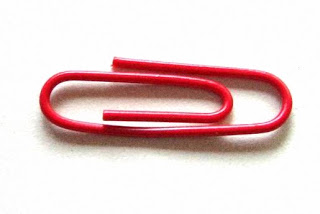6 years ago, in 2008, Kyle MacDonald successfully traded for a house. In 14 trades. He started with a small red paperclip.
Most of us may not start on a plan to trade a paperclip for a house or a car, but there’s great value in the lessons Kyle MacDonald learnt along the way. Of course, the lessons are after-the-fact, in hindsight or even just plain cooked up, but that doesn’t matter. What matters is the fact that people all over are looking to build stories. If you help them make theirs, you’ll make yours too.
And that’s the secret to building businesses today. First, how can you create a water cooler, and then, slowly and methodically upgrade it to an interconnected ecosystem.
Wells Fargo launched a new site recently where they are helping to tell stories. A few years ago, Citi had launched a similar program.
And now as several other companies hop on to the bandwagon to show their more human side, I thought that highlighting some principles of creating the water cooler and upgrading to an ecosystem are in order.
1. Let it be organic: Stories are about emotions, and situations. Don’t make them about your product. Because then they become artificial, suffocate and die. It doesn’t matter if someone used your product. Maybe next time they will. And next time they may even chance upon a bigger story.
2. Let it be about the story tellers: Everyone who traded with Kyle knew he was building a story. But they were building theirs too. Think about it. There’s always a WIIFM – physical or emotional, however small and however fleeting. We love drama, and we love attention.
3. Let it be about those who want to be inspired: Not all of us participate in the stories. But we are an important part of the story. We motivate others to make their stories. Because we are interested, and we are constantly taking away motivation and inspiration for ourselves too. In the process we are giving the actors energy. Would the actors in Kyle’s story be interested if they knew no one was looking?
4. Just help start something: Most people (me included), need a big push to do something. We think, we over-analyze, we are scared of stepping out of our shells and our cozy lives. But, in the end, evidence to the contrary is all around us. We really don’t need a perfect plan to start. When we start, the path opens up and new possibilities are discovered. Maybe what Citi and Wells Fargo started was all about them, and too organized, but they took the first step. That’s the important part.
5. Connect the dots: The making of water coolers has now become a science. There are plenty of social media experts who can help trigger good stories. But creating ecosystems is where the art comes in. Because it needs you to think of the moving pieces of your business, the costs and revenues, products and customers, retention and acquisition, cross sell and up sell, and then tie them all together so you can let the water cooler run so people can enjoy even as your business thrives. That balance is the key.
Because the water cooler dries up when there’s not something for everyone.

